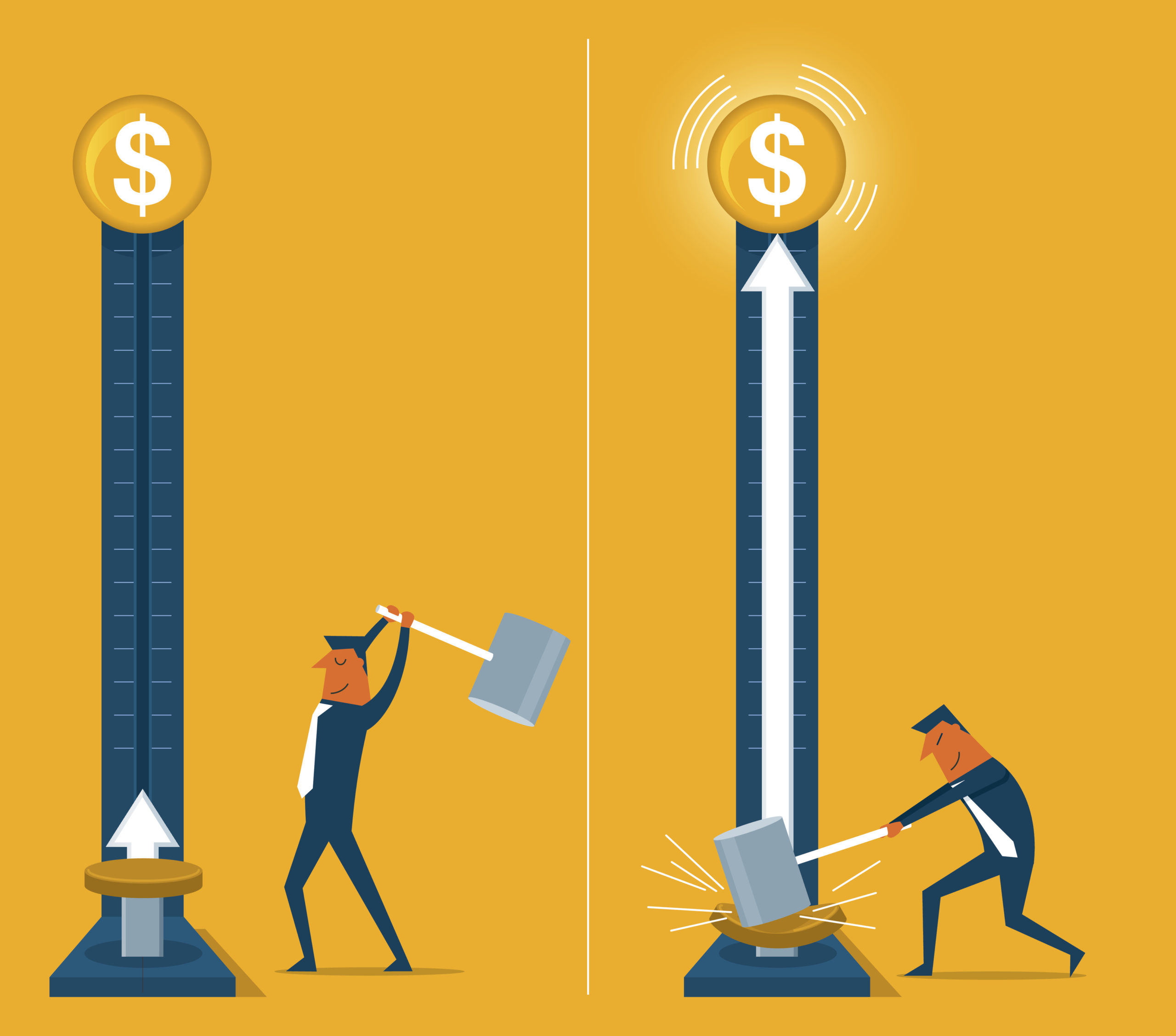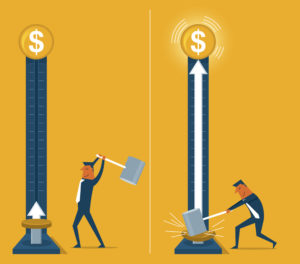13, 2017

What are the biggest challenges and inefficiencies you see in enterprise sales?
Question:
What are the biggest challenges and inefficiencies you see in enterprise sales? With a focus on business to business sales.
Answer:
Note: A similar question was asked with startups in mind: What challenges are faced by startups selling enterprise software? I answered that question from the viewpoint of startups. For this question, I answered from a general selling perspective.
- Prospecting: Finding the executive at a target company who is the right sponsor for your product.
How many VPs are there at companies like GE, Wells Fargo, and Boeing? How do you know which is the right person or team that can drive a purchasing decision in the near term? Why does Goldman Sachs have 12,000 VPs? Search LinkedIn for “Vice Presidents at Boeing.”
Companies like SpiderBook are building companies around solving this problem for sellers. Check out: ExxonMobil Decision Makers.
- Value Creation: Determining the value that your product will provide to the target company.
Assuming you find the right person to drive the buying process, how do you determine the value your product will create for the customer?
Will your prospects share complete and accurate information about their problem, its history, and its magnitude? Can you enumerate that value clearly in terms of revenue, cost, efficiency, or risk metrics in a way that is reasonable, reliable and believable for the buyer?
And even if you find the right people and establish value with your product, how does your product become a priority at your target company? Chris Dixon maintains that companies only buy 1-3 enterprise solutions per year in his post “Selling to enterprises.”
Plenty of big problems go unsolved at big companies because there are bigger, more strategic problems to solve, or the company simply doesn’t realize the magnitude of their problem.
- Executive Leadership Changes, Strategic Plan Changes and Corporate Reorganizations.
Imagine getting through the first stages of the sales process – finding the right team, establishing value – and you’re gaining momentum around a buying decision, then your executive sponsor leaves or the company undergoes a significant change in corporate strategy.
Have a Sales Question?
Grab a time to chat with Scott here.
The executive turnover rate is high, is climbing, and has been for years:
2003: Why Do They Keep Leaving?
2009: Expect Heavy CEO Turnover Very Soon
2011: CEO Turnover Is At Its Highest Rate In Six Years
Challenger Gray CEO Turnover Report
Assume you’ve avoided the minefield of executive leadership and corporate strategy shifts, and you’ve begun to gather all of the influencers in the purchasing process. What do you do when the company itself undergoes a reorganization.
Imagine working through the sales process with Google over the past 18 months, only to learn about their reorganization that might push you back to step one? What is Alphabet, Google’s new company? Or selling to Nikon last year.
- Organizational Complexity and Communication Nodes & Gaps: Managing the receipt, transfer, and interpretation of information.
Companies are complex networks. Consider how information is communicated, shared, and processed. As the company (network) size increases, the more communication nodes there will be. Think about the applications of graph theory to large companies and organizational behavior.
In “Five management lessons,” Ben Horowitz wrote: “As a company grows, communication becomes its biggest challenge,” Scores of companies like Yammer, Flowdock, Chatter, Hipchat exist simply to solve this communication problem.
From this perspective, each person with whom you interact during the sales process is a communication node. Within the organization, there are clustering effects around these nodes in selling to large companies, and essentially you’re playing the “telephone game” (aka “Chinese whispers“) with your prospective customers.
Further, applying “centrality” to companies, a key person in the purchasing decision will spread their views throughout the company, either supporting or detracting the purchasing decision. If the people most important to the purchase of your product don’t agree that a purchase should be made, it almost never matters how the rest of the organization supports your product. This agreement or disagreement may be entirely subjective, based on how that particular manager perceives the situation based on their departmental goals and their personal incentive programs.
(Hebert Simon wrote about this 50 years ago…http://digitalcollections.library.cmu.edu/awweb/awarchive?type=file&item=33569)
- Organizational Behavior: How companies make decisions.
A company takes on a personality of its own, and the will of its individual components (people) rarely reflect the decisions made by the company as an entity.
We presume that companies make rational choices with complete information. Unfortunately, that’s not the case. Companies exhibit bounded rationality and a number or related organizational decision behaviors. Managers exhibit biases, constraints, and preferences.
- Upper echelon thinking: Cognitive Diversity and Consensus in Group Decision Making: The Role of Inputs, Processes, and Outcomes
- Group Dynamics: Group dynamics
- Coalition Formation: Organizations as Resource Dilemmas: The Effects of Power Balance on Coalition Formation in Small Groups
- Multiple & conflicting individual goals and incentives
- Effects of environmental, technology, and organizational size
Aligning the “right” people with the “right” problem” and the “right” product, then providing all of the relevant information may not matter at all once the organizational entity’s decision-making process supersedes the capabilities of the individuals’ the purchasing decisions.

- Long sales cycles: 6-12 months is often considered “short” for large-scale enterprise purchasing decisions.
A couple reasons for this:
- It takes time for a business/operations team to gain consensus and find a key executive to sponsor the purchase.
- This is often because a many business problems are viewed internally as implicit needs instead of explicit needs affecting the strategic outcomes of a company. Helping a large organization to learn about the magnitude of their problem then to take action is really, really hard.
Mark Cranney discusses how to motivate customers in “If SaaS Products Sell Themselves, Why Do We Need Sales?.”
The Challenger Sales model is based on this proposition – the salesperson is the person initiating the education cycle, delivering insights and opportunities for their target accounts to grow.
Enterprise sales are often a “double sale” – you are selling that the company has an explicit problem that requires immediate action, AND that your product is best-suited to solve that problem. It can take months (or years!) to educate a company about the magnitude of their own problems.
Then there’s the internal procurement process – working through all of the checks and balances in place required before a purchase is made, including the due diligence by the IT, Risk Management, Compliance, Vendor Management, and Legal departments.
For more on this, read Joel Spolsky’s article about the “PO cycle” in “B2B sales cycle studies.”
- Systems integration: Successfully implementing the new solution.
Depending on the size of the purchasing company, there may be hundreds (or thousands!) of systems and processes already in place.
Deloitte and hundreds of consulting companies have entire business practices dedicated to the one task of integrating systems.
Salesforce has a separate business unit dedicated to integrating its own product – Salesforce Consulting. In fact, Salesforce earned $99 million dollars in revenue in Q4, 2014 alone from their Professional Services (From: Salesforce Announces Fiscal 2015 Fourth Quarter and Full Year Results)
Adding one more “solution” to the mix is a proverbial drop in the bucket. So while as the seller, you are excited about how your product will bring a new world order to your customer, the reality is that the rest of the company views the installation and implementation of your product as more work and more cost.
- Value Realization: Implementation and achieving the results promised and expected by the customer
Once the product is implemented across the organization and integrated with their internal systems, how do you analyze and measure that the purchasing company receive the value they expected?
Check out: What To Do Before an Enterprise-Wide CRM Implementation
The check out 10 Famous ERP Disasters, Dustups and Disappointments.
- Sales Model Repeatability: How many of the obstacles you’ve just overcome – from feature requests to documentation to customer support SLAs – are repeatable and scalable to the next customer, and the next, and the next.?
Viewing companies as complex systems, it is challenging in enterprise sales to determine how to apply the tactics and processes used to gain one customer on the rest of a market – identifying similarities across customer types so that each sales process and solution implemented is not bespoke.
This is the essence of product-market fit. More established companies presumably have this. Selling for the established companies can be challenging because companies typically do not adjust the products they are selling quickly enough as a market’s needs change. Salespeople at more established companies are often left selling a product that may have solved the customer’s problem of yesterday but not necessarily today’s problems.
A related challenge is selling products for large companies, is focusing the salesperson to sell to a customer’s problem instead of selling the product. After a track record of success, it’s an easy trap to fall into for a salesperson to treat all customers as a “nail” for which their product is a “hammer.”
For small companies and startups, the challenge is achieving product-market fit, so even after a sale, the seller is left without complete information as to whether the solution sold is in fact repeatable and scalable, or truly bespoke.
(Here’s a good primer for startups from Gigaom on developing a repeatable sales model: Accelerate Your Startup: Develop a Repeatable Sales Model.)
Maybe the challenge in selling for large and small companies is product-market fit – the small company hasn’t figured it out and the large company often forgets and can’t adjust quickly.
- Organizational Memory: “the accumulated body of data, information, and knowledge created in the course of an individual organization’s existence.”
In his paper “Organizational Memory“, James Walsh defined the structure of organizational memory into five “bins”:
- Individuals – The biases and perceptions of each person in the organization, and how each person perceives and retains information.
- Culture – The learned way of thinking, perceiving, and feeling about problems and workplace challenges.
- Transformations – How information is processed and transmitted.
- Structures – How the org chart is constructed; how people at the bottom of the org chart interact and share information with those above them, and vice versa.
- Ecology – The physical structures and work environment.
Companies retain information, often subjectively, about your product, company, and previous attempts to solve their problems, leaving sellers to constantly fight against these structures, processes, and biases.
During the sales process, the seller will be dealing with subjective and incomplete memory of the customer’s problem. If a sale is lost, the seller will be fighting the negative anchoring of how their product is perceived when attempting to sell to the customer in the future.
Given these challenges, it’s a miracle anything ever happens in enterprise sales…
**This Q&A article was originally posted on Quora. Check out Scott’s Quora page here.
